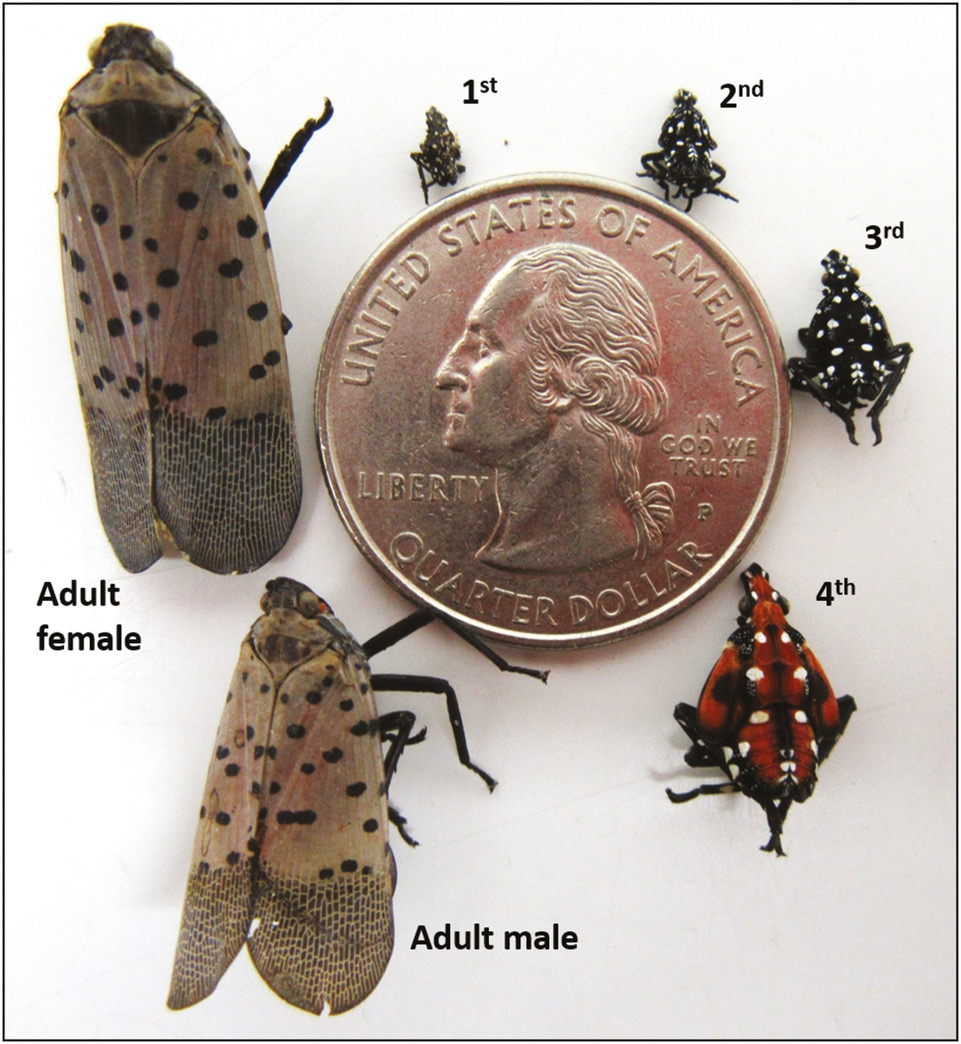Here’s an environmental concern that is concerning in the “worrisome” sense: the invasive spotted lanternfly, which was first detected in the US in 2014 and in Maryland in 2018. In March 2023, the Maryland Department of Agriculture expanded its spotted lanternfly quarantine to include most of the state, including Montgomery County. To contain the pest’s spread, the quarantine imposes permitting, training, and inspection requirements on businesses and agencies that move articles in which lanternflies might be hiding (such as landscaping waste, packing materials, outdoor furniture, plants, and so on).
At this point Montgomery County is considered to be “lightly infested,” but to keep it that way requires vigilance. To guide us, the University of Maryland Extension has a helpful web page, Spotted Lanternfly Management for Residents, which provides detailed information on how to identify spotted lanternflies, report them, and destroy them. The page also has a checklist for inspecting outdoor items before moving them from or within the quarantined area.
We as gardeners, and especially those of us sharing plants for the plant sale or other reasons, need to do our part by being alert for any signs of these pests. In the spring, the lanternfly life cycle is just beginning. Overwintering egg masses begin to hatch in late April, with the young nymphs emerging and growing through spring; the flying adults don’t appear till late July.

When inspecting plants or other items now, look for egg masses. They’re about an inch long, with a grey mud-like covering that eventually flakes off to reveal 30 to 50 brown eggs resembling seeds aligned in 4 to 7 rows. To get a good idea of the various ways egg masses can appear, do a web search on “spotted lanternfly egg mass identification.”
Later, when the nymphs have started to hatch, they can be quite small (see picture). As the picture shows, the nymphs start off black with distinctive white spots.
Whether for the upcoming plant sale or a neighborly plant swap, we want to be sure we don’t share anything nasty, so watch out for these guys (as well as the usual hitchhiking weeds).